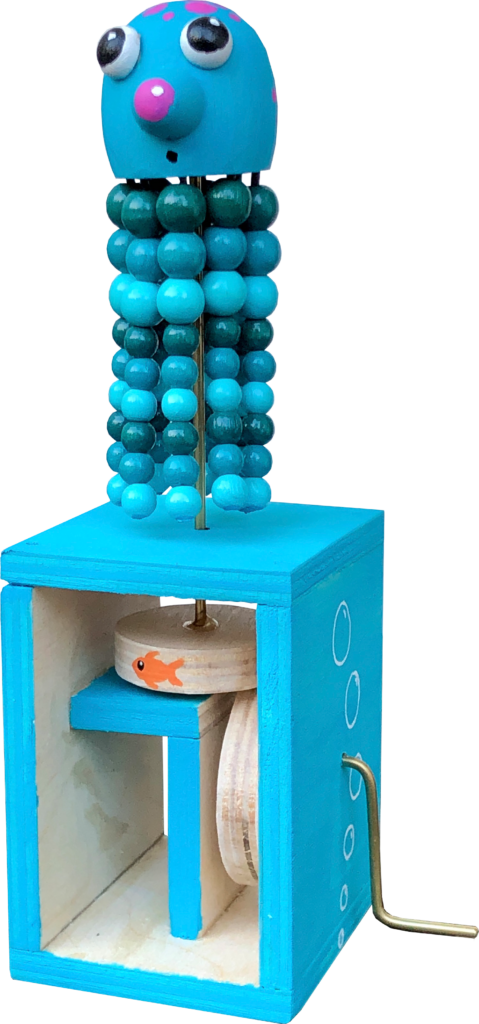
The Idea
I am currently making a fish automaton, which will appear in a separate article, and I was considering what sort of fish swim around in the sea and what shape and colour they are. A lot of fish have much the same shape, you know, sort of fishy looking, long and sleek with fins and tails. Two exceptions swam into my mind, the first was a seahorse and the second was an octopus. I am sure that I will sometime have fun trying to make a seahorse automaton, but I couldn’t resist pushing the fish to one side and knocking up a simple octopus.
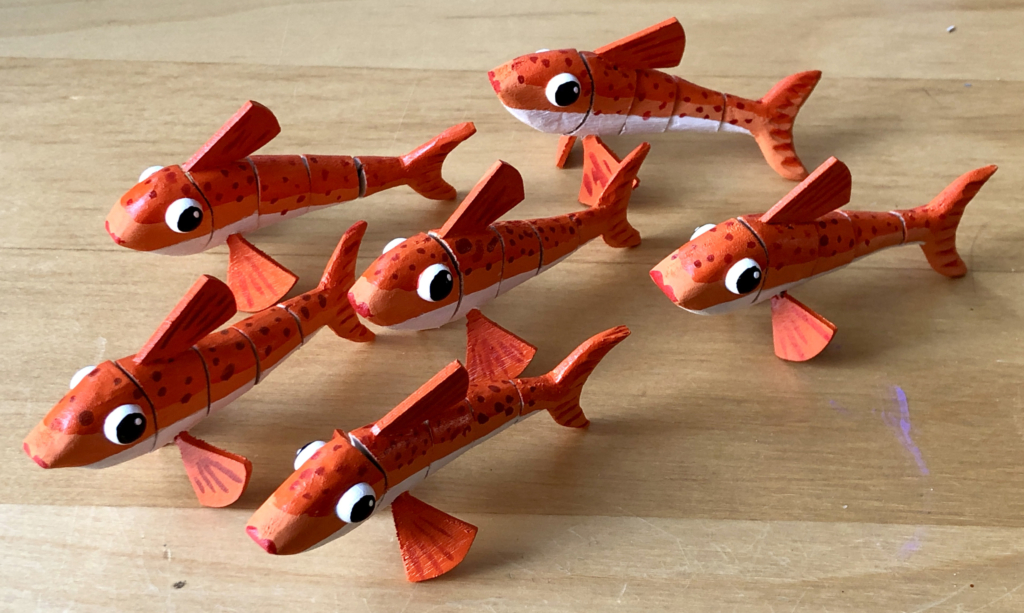
The Octopus
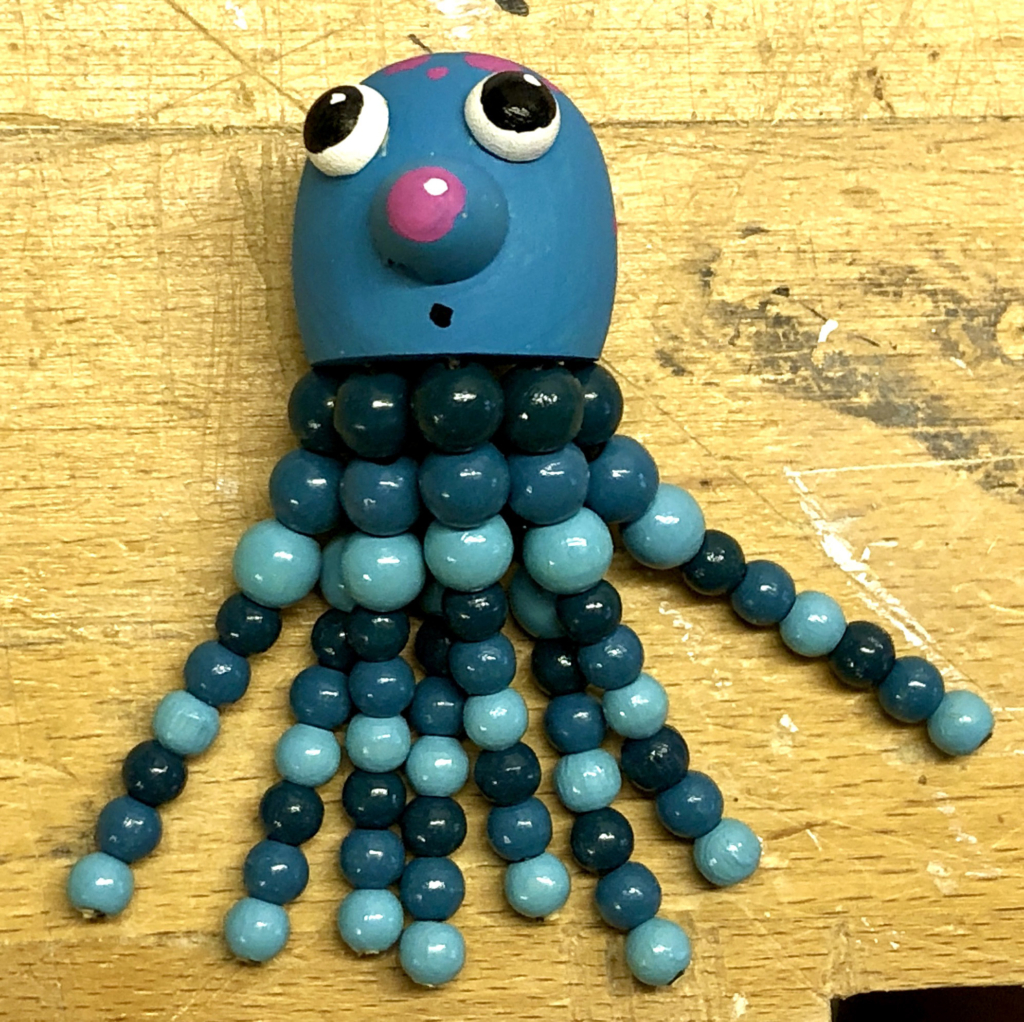
It doesn’t take long to make an octopus as they only have a head and eight arms. I used a wooden egg for the head, sawing the pointy end off to make a flat surface. In this flat surface I then drilled eight holes into which I glued eight pieces of string. Each octopus arm is then made up of 9 wooden beads which I found ready drilled and painted in a hobby shop. I suppose they were intended for children to make a necklace or a wrist band with a bit of elasticated thread. To make a friendly impression, my octopus has a nose and an external mouth with a slightly puzzled expression. I apologise in advance to any biologists who have a better understanding than I do of what is essential for an octopus in its life down in the ocean depths.
The Mechanism
As my octopus has eight dangly arms, the simplest movement is to spin it around so that the arms flail outwards. I decided to add a bit of up and down movement to produce some sort of undulation and make the movement what seems to me to be more octopus-like.
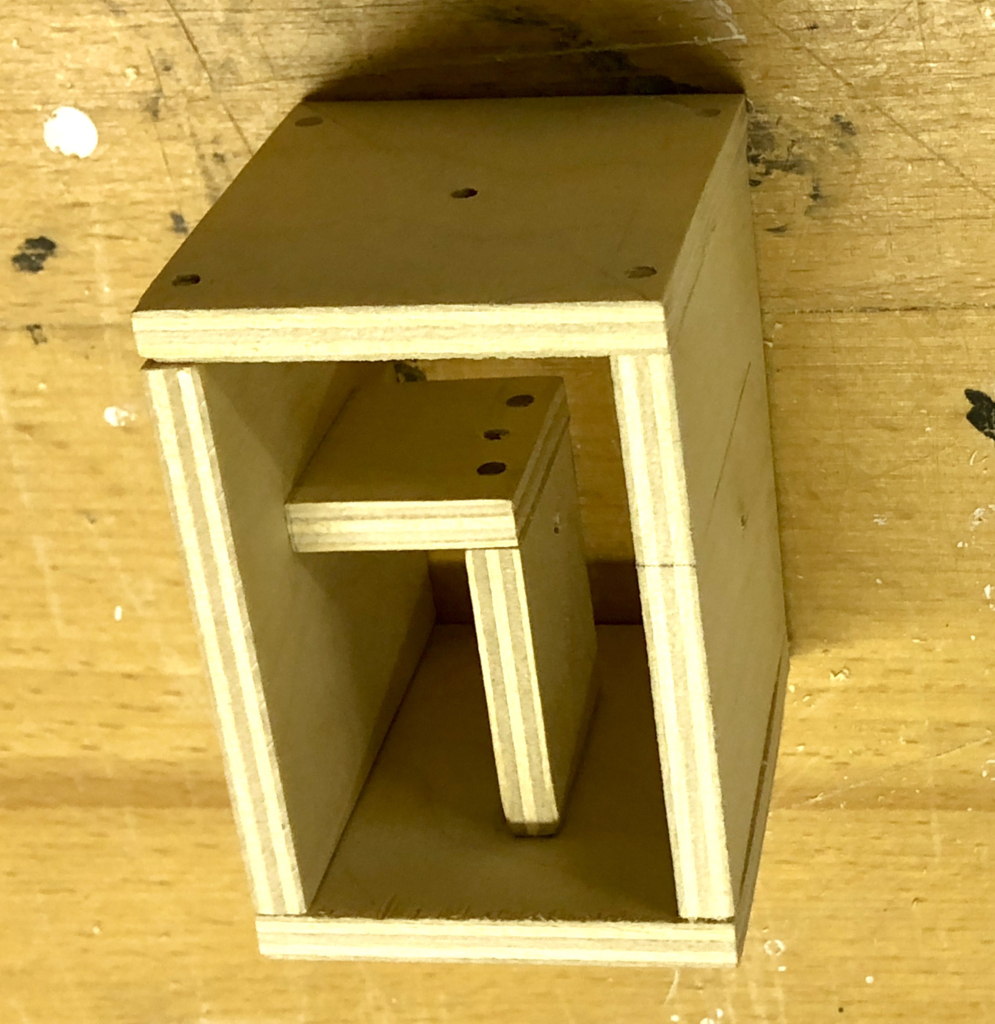
A small, open box is enough to contain the mechanism driven by a crank.
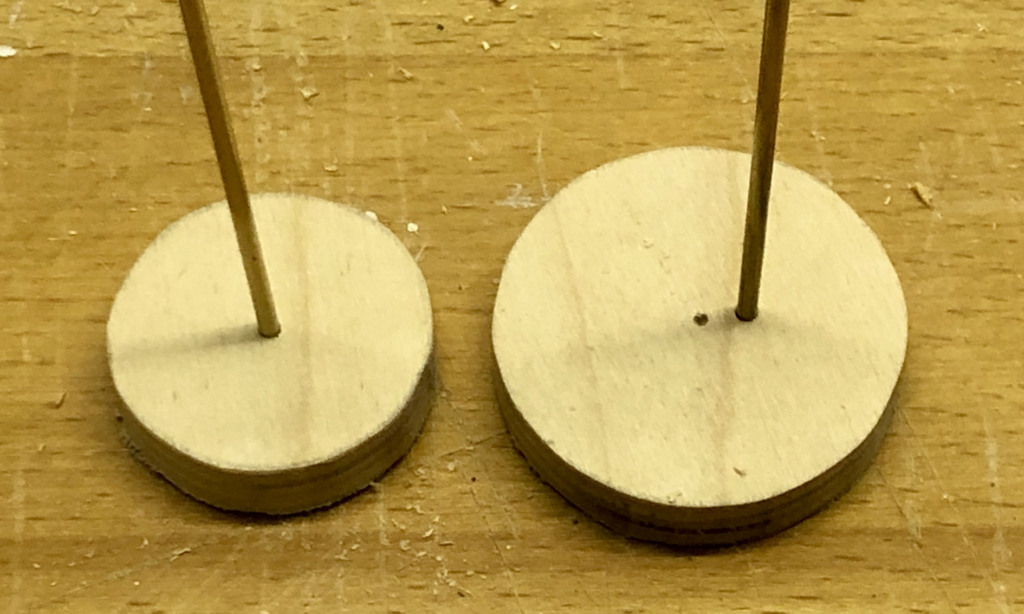
We need two wooden discs, one mounted horizontally and the other vertically. You can see that the shaft for the larger disc is mounted off-centre on a 2 mm brass rod. This eccentricity is what is required to produce the up and down movement.
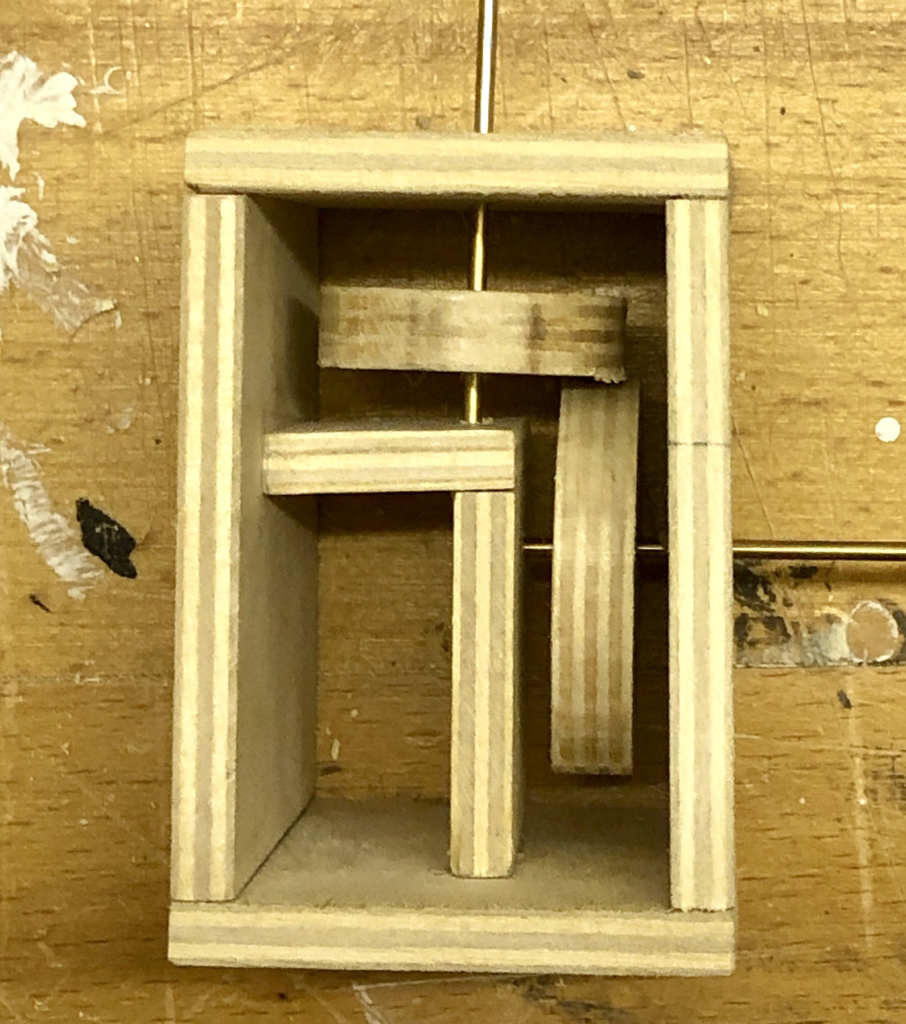
For each turn of the horizontal shaft its eccentric disc turns once and so pushes the smaller disc up once and allows it to fall down once. The eccentric disc is thus acting as a cam. It could have a more complicated shape to, for example, increase the number of up and down movements per turn. This quite simple mechanism gives us just what we need to make the octopus both spin and move up and down, producing the undulating effect we are after.
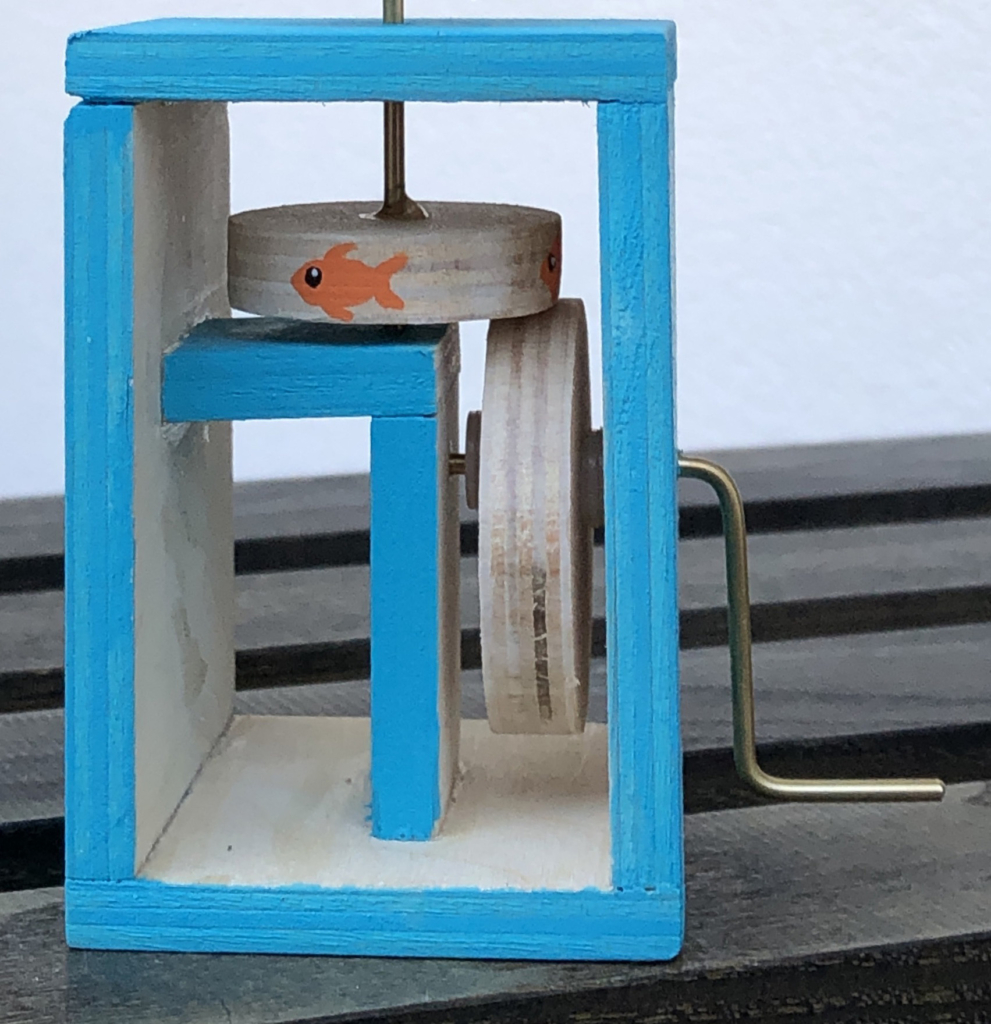
In the finished item you can see that a couple of plastic washers keep the eccentric disc turning smoothly. I have also painted some very small fish around the circumference of the smaller, driven disc. It would be a bad idea to paint the eccentric disc as the abrasion as it drives the other disc would rub the paint off.
Video
Youtube link https://www.youtube.com/watch?v=YPYMaLMjkJQ